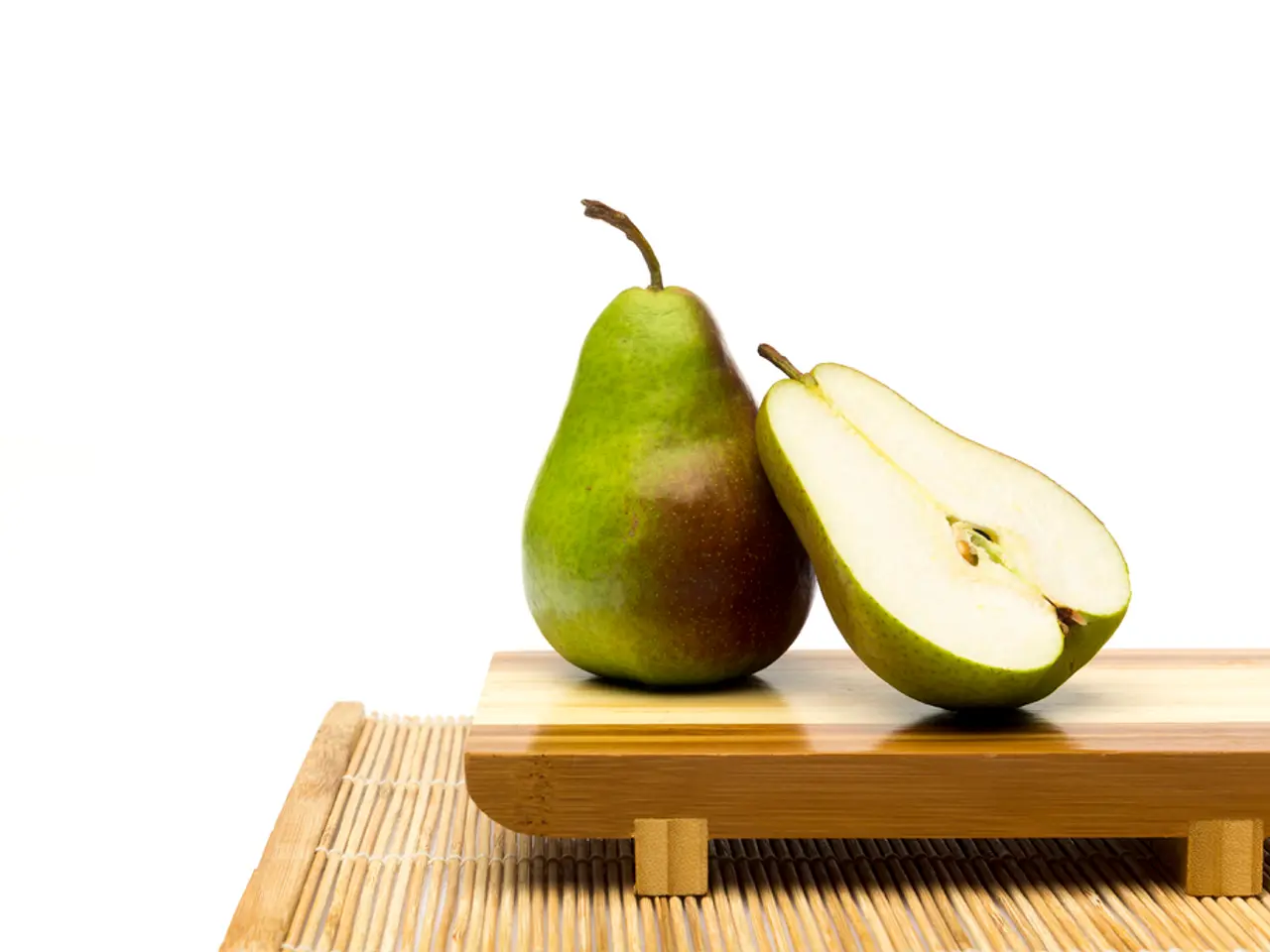Guide for Cultivating Pears: A Step-by-step Approach
Pear trees are not just ornamental, they also produce delicious edible fruit. With a variety of cultivars to choose from, growing your own pear tree can offer more flavour and choice than what you might find in supermarkets.
Choosing and Planting Your Pear Tree
Pear trees can be grown as standalone specimens, trained as espaliers or cordons, or grown in pairs for successful pollination. Bare-root pear trees should be planted when dormant, between November and March, while potted pear trees can be planted at other times of the year. For best results, grow pear trees against a south-facing wall or fence. Soil for pear trees should be free-draining and tending towards acidic, with a pH of 6.5.
Caring for Your Pear Tree
Pear trees thrive in moist but free-draining soil in full-sun to partial shade. To maintain tree health, avoid excessive nitrogen fertilization and promote good air circulation. Pear trees should be mulched annually with well-rotted manure or compost.
Harvesting and Ripening Pears
Pears can be harvested by gently twisting them off the tree. It's best to pick pears when they are still firm to the touch. Most varieties of pear ripen better off the tree and store successfully for several months. Harvest pears from late August onwards. Allowed fruits to ripen in a cool, dark place.
Common Pear Tree Problems and Solutions
Fire Blight
Fire blight is a common bacterial disease that affects pear trees. Look for blackened, wilted shoots and branches that appear scorched or oozing bacterial slime. Infected parts may eventually shrivel or ooze.
To prevent fire blight, choose fire blight-resistant varieties such as Seckel, Potomac, Warren pears, and Hosui Asian pears. Regularly monitor for early signs. To treat fire blight, prune all affected shoots at least 12 inches below visible infection during dormancy to avoid disease spread. Sterilize pruning tools between cuts to prevent transmission. Apply organic bactericides like Serenade Optimum, neem oil, or copper fungicides during specific bloom stages as preventive sprays. Avoid pruning during the growing season if possible because it can spread the bacteria.
Leaf Spot Disease (Entomosporium leaf spot)
Leaf spot disease is another common issue. It presents as small reddish spots on leaves that may cause premature leaf drop. More likely during wet conditions and dense canopies.
To prevent and manage leaf spot disease, improve air circulation by pruning dense branches and spacing plants well. Avoid overhead irrigation that wets leaves and water early in the day so leaves dry quickly. Collect and destroy fallen infected leaves to reduce inoculum.
Nutrient Issues (Chlorosis)
Leaves turning lighter in color, often caused by high soil pH (above 7.3) limiting nutrient uptake, is a nutrient-related issue.
To manage nutrient issues, test soil pH and nutrient levels, then amend soil accordingly (e.g., iron chelates or sulfur to lower pH if needed).
Additional Advice
Regularly inspect pear trees for any unusual symptoms and maintain general tree health with proper watering and fertilization. Remove and destroy any severely infected plant material to reduce disease spread. Implement a holistic approach combining resistant varieties, sanitation, pruning, and preventive sprays for best control outcomes.
Some popular pear cultivars include 'Pyrus communis' 'Beurre Hardy', a French dessert pear with an excellent flavor and good-textured flesh, 'Pyrus communis' 'Conference', one of the most well-known dessert pear varieties, with heavy crops of juicy, sweet pears, and 'Pyrus communis' 'Concorde', a cross between 'Conference' and 'Doyenne du Comice' and produces good crops of well-flavored fruit.
Pears can be eaten raw or cooked and are versatile in various recipes. Enjoy the flavour and benefits of growing your own pear tree!
To complement your home-and-garden endeavors, nurturing a pear tree in your garden can enrich your lifestyle with the reward of delicious, homegrown fruits. From popular choices like 'Pyrus communis' 'Beurre Hardy', 'Conference', and 'Concorde', to less common, yet resistant varieties such as Seckel, Potomac, Warren pears, and Hosui Asian pears, there's a pear tree to suit every preference and garden setting.




